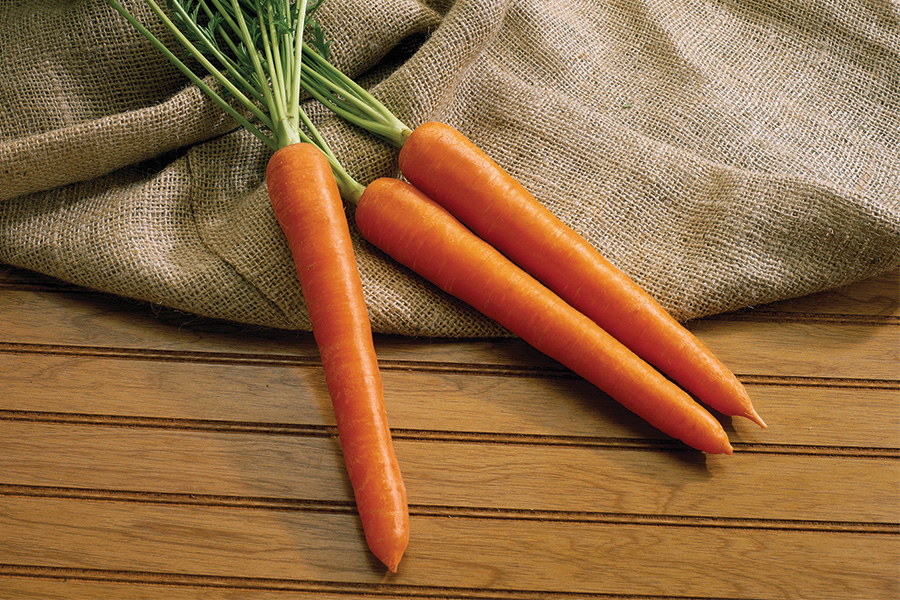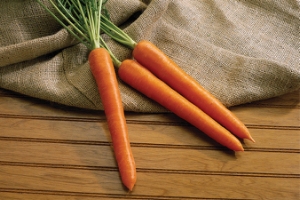
Olympus
Outstanding for bunching. Great color combined with a smooth finish. Very crisp texture and excellent flavor. Classy hybrid with high yield potential.
| V19007 : Olympus | ||
|---|---|---|
| Treatment | * Pkg Size | ** Price (USD) |
| Treated Pelleted | 10M seeds | $10.30 |
| Treated Pelleted | 100M seeds | $68.00 |
| Treated Pelleted | 1000M seeds | $630.00 |
|
* M = 1,000 ** US customer prices shown in USD. *** Canadian customers, please log in to see CA prices in USD. |
||
Attributes
Growing Tips
-
When deciding what variety of carrot to plant one must determine two things: “What is my target audience?” and “What kind of soil do I have?” Growers need to define if they are selling to fresh or storage markets. Most of the carrots available from Rupp are geared towards fresh market. If high tunnels or cold frames are used in your operation, you may want to consider carrots as part of your rotation due to their ability to resist cold weather.
There are five main types of carrots: Nantes, Chantenay, Baby, Imperator, and Danvers:
- Nantes are easily and widely adapted; straight cylindrical roots ranging 5” - 7” long. They tend to have a sweet flavor and crisp texture, but have a limited storage potential. Nantes are grown in loose sandy soils or in raised beds.
- Chantenay have conical roots with broad shoulders and rounded tips. They have a rich, sweet flavor and also possess a good storage potential. They are an excellent type to grow from summer to fall and are adapted to various soil types. They usually size up well in clay soils with high organic matter content.
- Baby carrots have a root less than 5” long with a crisp texture and are frequently quite sweet when mature. They also are grown in any well drained soil and can be used to separate different types of salad greens. They tend to have limited storage potential.
- Imperator are long with a tapered root shape, stocky shoulders and strong tops. They tend to have a fibrous texture and store well. This type of carrot sizes up best in deep, sandy loam.
- Danvers have a thick rooted cylindrical shape with a yellowish core. This type is mainly used for processing, juicing, and storage.
- Planting
-
Carrots can be planted in soils as cool as 40ºF with the ideal temperature ranging from 50 to 75ºF. They take anywhere from 7 - 21 days to emerge from the soil depending on soil temperatures. Spring carrots are planted 2 - 3 weeks before the last frost. For fall harvest, plant carrots 10 - 12 weeks before the first frost. Seed carrots ¼” - ½” deep and 15” between rows. Using seed tapes or pelleted seed will help prevent over seeding.
Planting Guidelines - CarrotsApproximate Seeds per Pound:320,000 - 410,000Seeding Rate per Acre by Weight:2 - 2.1 lbsSeeding Rate per Acre in M (1,000):653.2 - 871 MSeeding Rate Seeds per 1,000 foot of Row:24,000Seed or Plant Spacing In Row:.5"Seed or Plant Spacing Between Rows:15 - 20"Seed or Plant Spacing Depth:.5"Recommended Soil Temperature:50 - 85°FDays to Germination:8 - 12
- Management
-
Soil nutrients are very important. Test the soil to check for optimal levels. Also scout for insect and fungal infestations. Root quality is best when soil temperatures are 60 - 70ºF. The shape of the root is determined within the first few weeks after germination when the new plant extends its taproot deep into the soil. Sometimes growers will mix radish seed with carrot seed to help with emergence. Radishes tend to have the ability to break though soil crusting which in turn helps the carrots emerge.
- Harvest
-
Fresh market carrots are harvested when they are ¾” - 1½” in diameter.
- Storage
-
Store carrots at 32 - 34ºF and at 98 - 100% humidity. Store clean carrots away from other fruits and vegetables.

